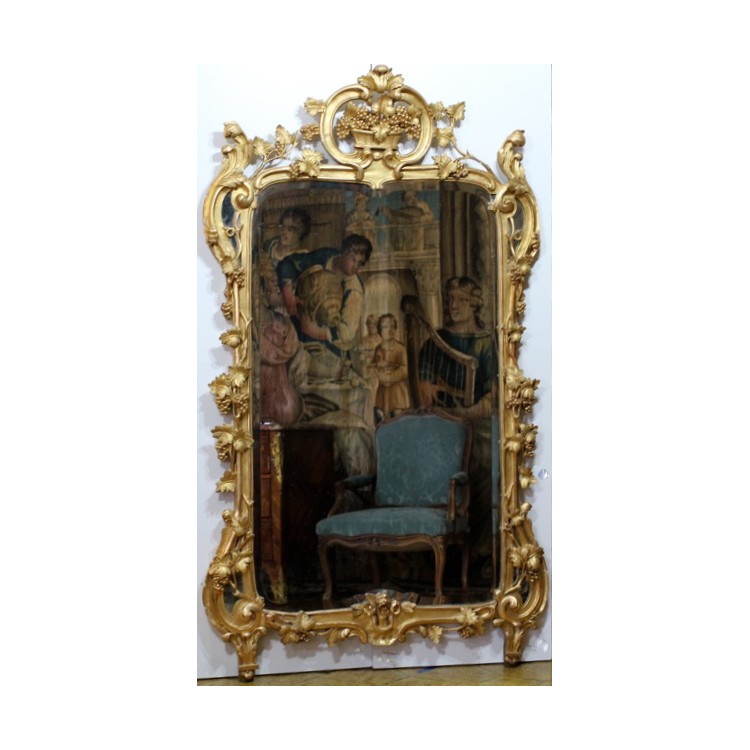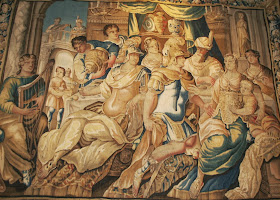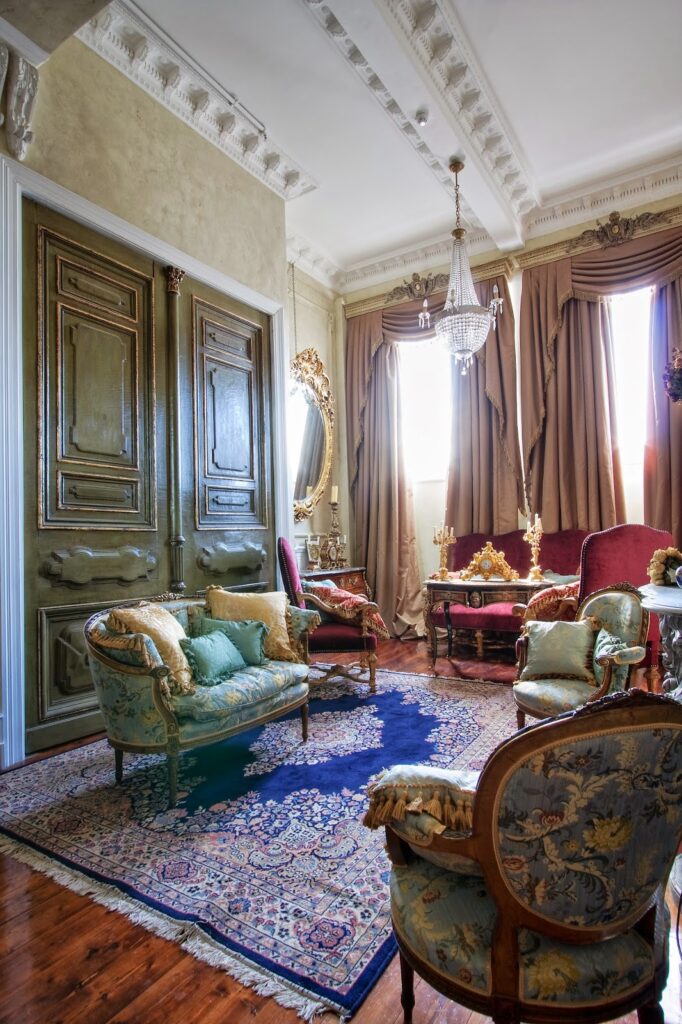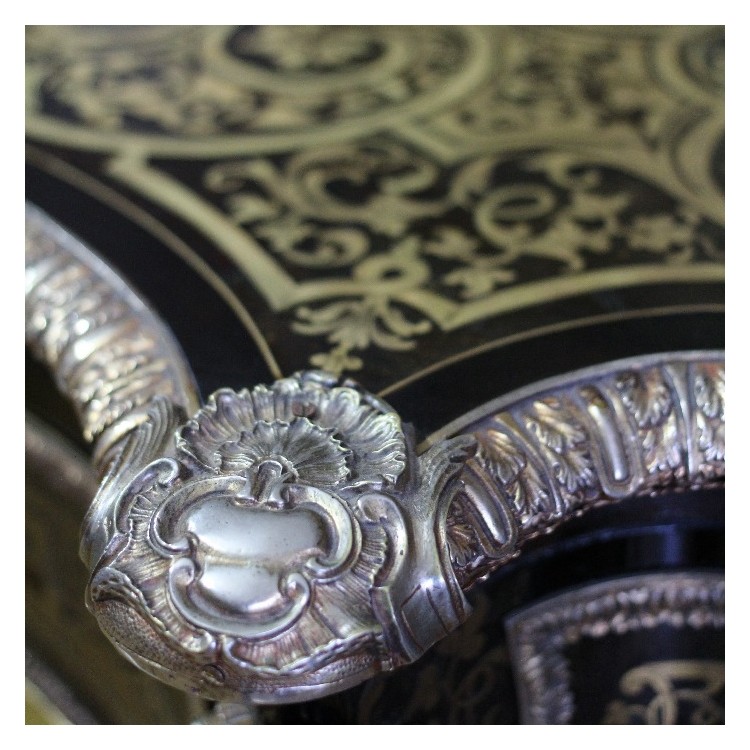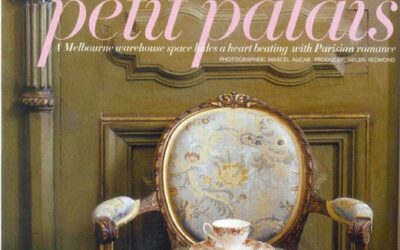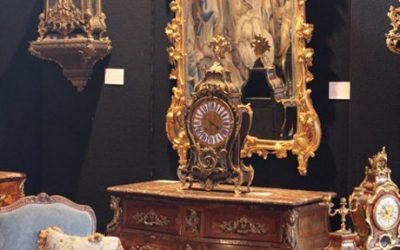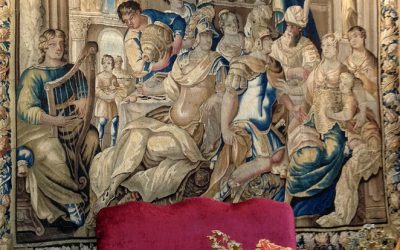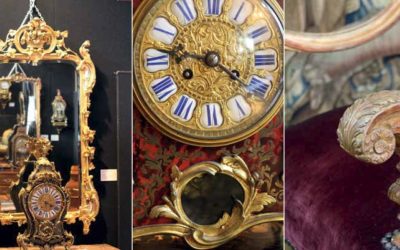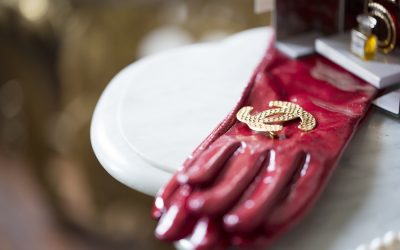Unlike London, today there are only a few authentic period interiors left in Paris, having survived from before the French Revolution, or the French’s predilection for changing fashion constantly.
For the potential collector, interior designer or architect, looking for long-term investment as well as decorative pieces particularly suited to contemporary interiors, French antiques certainly deserve attention.
Anton Venoir Interiors in Melbourne specialise in fine French furniture, textiles and objet d’art from the 17th to the 19th centuries. They display their collection at significant events, like the recent AA&ADA Melbourne Antiques fair, as well as in their private showroom – Appartement 26, where you can view and appreciate the diversity and fine quality of the pieces on offer.
From chairs to clocks from commodes to salon suites and from tulipwood to kingwood pieces with brèche violette marble tops, the selection of antiques also includes mirrors and tapestries.
From the 17th Century to the 19th Century in the styles of Louis XIV, Régence, Louis XV and Louis XVI. each have been carefully studied, assessed and chosen. The mirror in this view of their gallery comes from the south of France. It is decorated with grapes, vine leaves and branches, so redolent of the area’s 2500 + year’s wine tradition. The 18th century in Provence, like the rest of Europe and Britain were glory years, the land rich and fertile providing prosperity through active trade.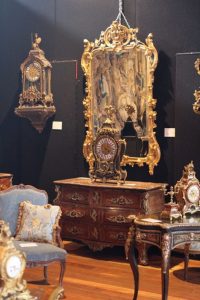

More sophisticated pieces were influenced by Paris as the eighteenth century Provencal furniture makers responded to the latest fashions from the capital.
In the first half of the century there was the sinuous curves, beautiful ornamentation and asymmetrical characteristics of the Louis XV or Rococo) style and in the second half, the ordered lyrical elegance of the Louis XVI, or Neoclassical style
The mirror is from the region near Beaucaire, which is revealed in the quality of regional timber used whose strength facilitated the work of the sculptor who carved its applied decorative ornament that was later gilded.
The Residents in Arles, Beucaire and Tarascon supported the tradition of fine furniture making in their region, produced by local craftsmen.
The two main areas of production were Arles and Fourques.
Arlesian pieces had an emphasis on elaborate ornate carving, with curved lines and lavish floral detail on delicate, low relief, such as garlands of roses, flower buds and olive branches.
The style of Fourques meant furniture with deeply sculpted curves and undulating mouldings with little or no decorative motifs, and with less carved detail and ornamentation.
Anton Venoir Interiors are currently offering a splendid seventeenth century ‘Royal Aubusson Tapestry by Isaac Moillon (1614-1673) depicting the
‘Banquet of Dido and Aeneas’.
In the grand palace of Carthage the guests at a banquet are gathered around Dido Queen of Carthage, who has her arm around Cupid, an indication the Trojan hero Aeneas on her right is holding her captive with his many charms.
Accompanied by Achate (being served wine) Aeneas is relating to Dido the story of the misfortunes of the city of Troy.
The “moral” of the story is that young women should not succumb to the advances and promises of ardent young men, because as it turns out Aeneas abandoned her.
The border of the tapestry is a garland of flowers and it’s signed “A Fleurs de Lys B ” – Royal factory of Aubusson. The factory produced both carpets and tapestries in France from the 14th century.
Their origin was with the weavers of Flanders, who sought refuge in the town of Aubusson in the late 1500’
During the 17th century Aubusson weavers were given “Royal Appointment” status.
Aubusson, and also the Gobelins workshops, which King Louis XIV (1638-1715) purchased in 1662, then took tapestry making to a high art form.
During the 18th century, tapestry became part of the decoration of walls in town, fixed onto battens.
Anton Venoir Interiors import pieces that are shown off to perfection in their private showroom at Prahran,
where you and your advisors can view and consider pieces from their collection for yours
Furniture construction and design also significantly advanced in France during Louis XIV’s reign. Its design style was strong and bold, complementing the era’s so-called ‘Baroque style’ with its uncompromising symmetry, grand effects and studied opulence.
Among the many superb craftsmen one stood out, he was Andre Charles Boulle, born 1642 – 1732. He effectively used timber inlaid with tortoiseshell and engraved brass to render superbly wrought designs.
The Bureau plat is of the finest quality after a model by Leonard BOUDIN ( 1735-1761).
Many of the exceptional 19th century Decorative Art pieces, were modeled after pieces by Master Ebeniste’s.
Often underneath tapestries you would find disposed elegantly, an 18th century Louis XV Ormolu Mounted Kingwood and Bois Satine Commode.
Anton Venoir Interiors has one of these on offer, in the design style known as Louis XV or ‘Rococo’, which is characterized by its curvaceous bombe shape, capricious ‘cabriole’ legs and splendid applied ormolu mounts
After 1751 furniture in France was required to bear impressed stamp of the maker.
The Jurande des Menuisiers Ébénistes, who examined pieces and if satisfied with the quality impressed the initials J.M.E. on a piece, and only those made expressly for the Crown were exempt
This is stamped FF. Delorme, JME – Francois Faizelot Delorme (1691-1768) Maître Avant 1735 and Jean Louis Faizelot Delorme, Maître 1763.
They all belonged to one the most famous families of cabinetmakers; the father, Francois Faizelot Delorme (1691-1768) with his sons Jean-Louis Faizelot Delorme, Alexis Faizelot Delorme and Adrien Delorme who were all maitres-ebenistes.
The best interiors of the 18th century in the French neoclassical taste, achieved a splendid synthesis between fixed and movable decoration and furniture with the new style becoming popular after the Revolution. ‘
Although the classical doctrine flowed from Paris at the beginning of the nineteenth century it was still inspired by pre revolutionary ideals and models.
Faizelot Delorme
(b Paris, c. 1715-20; d after 1783). French cabinetmakers and dealers. Were on of the most famous familes of cabinetmakers; father, Francois Faizelot Delorme (1691-1768), and brothers Jean-Louis Faizelot Delorme, Alexis Faizelot Delorme and Adrien Delorme were all maitres-ebenistes. Adrien became a maitre-ebeniste on 22 June 1748 and was a juror of his guild from 1768 to 1770. Jean Louis Faizelot Delorme became maitre ebeniste in 1763. They made and sold luxury furniture throughout the 18th century in the Regence and Louis XV style, decorated with japanning either in imitation of Chinese lacquer (e.g. Amsterdam, Rijksmus.) or with European decoration (e.g. Waddesdon Manor, Bucks, NT). He also carried out sumptuous floral marquetry (e.g. Paris, Petit Pal.). His most distinguished work consisted of small pieces of furniture (e.g. Paris, Louvre; London, V&A; Washington, DC, Hillwood Mus.) embellished with floral marquetry or inlays of scrolls and foliation executed in end-grain wood on a dark-veined, light-wood ground forming a chevron pattern (e.g. Lyon, Mus. B.-A.).
This stunning Boulle bureau plat came to Melbourne from the private collection at the Chateau de Cheverny in the Loire Valley. During World War II, the Mona Lisa, along with other famous works of art and significant pieces decorative art, were hidden in this Chateau. One of Anton Venoir Interiors treasured pieces, the bureau plat has a reversible top, which flips over to reveal the original tooled leather-writing surface so that it could act as a desk as well
Circa. 1848, the ormolu-banded top is inlaid overall with scrolling arabesques, above two shaped drawers, which are centrally fitted with Dionysian Satyr masks.
The top is raised on hipped cabriole legs, which are mounted with Bacchus’ masks within trailing vine foliage.
The legs end with gilded tapering scroll sabots, resembling deer hooves.
The French coined the phrase “vive la difference’, and incorporated it into the fabric of their homes.
If you embrace French antiques the exuberant spirit and the innate style of France and its people can be yours.
For lovers of fine furniture if you are in Melbourne or visiting from interstate or internationally, then Tony Venios of Anton Venoir Interiors is the man to see.
The magnificent collection of 17th, 18th and 19th Century French decorative arts he has assembled include many pieces headed for museums.
The works have been collected over the past 25 years.
Phone and make an appointment and Tony Venios will help you to start planning your new style, or to choose a special piece for your collection.

